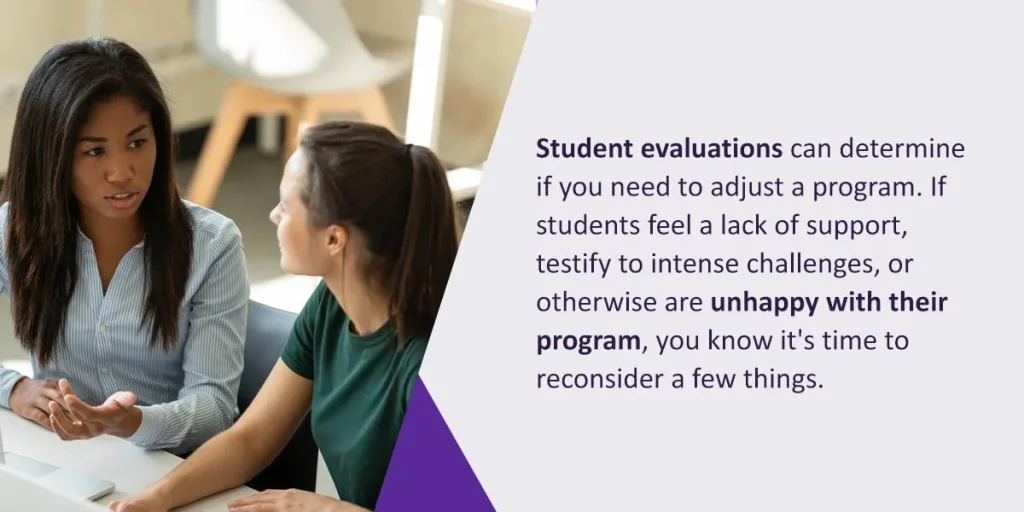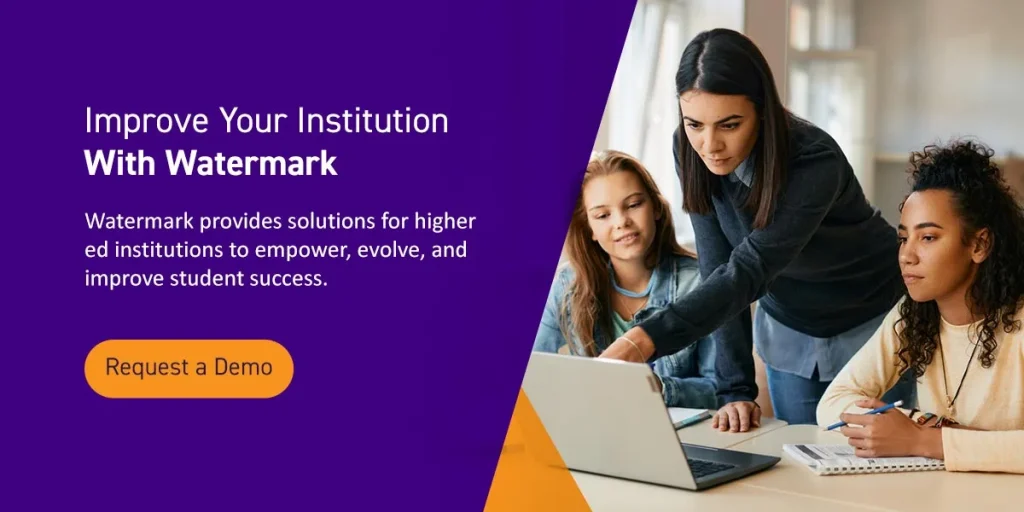



College course reviews and student evaluations are a chance to reflect on the successes and challenges facing your institution. If you’re trying to find ways to better your institution and provide more enriching educational experiences for your students, investing in university course reviews will go a long way.
Student reviews will give you an honest depiction of your strengths and weaknesses, and you can use this feedback to identify where you need to grow and what you’ve been doing well. This article can help you understand why college course reviews are so important and how to use them to increase retention and improve your institution.

College course ratings and student evaluations will reflect your institution and affect the decisions of potential prospects. Students want to feel confident in their instructors and know they will receive value from their education. If your course reviews reflect positively on your institution, those students will be more interested in what your institution offers.
College class reviews are important because they do the following:
Students like to check the qualifications and accomplishments of their professors. They are also more likely to take a course with an instructor with high ratings from other students. Some students will check online, ask other students, look for lecture videos, and review course materials before enrolling in a particular course.
Negative student reviews can reflect poorly on your professors, causing students to avoid the class, opt for other instructors, or drop out of their program if they think it is too difficult. Encouraging college course reviews by students can give you insight into whether you need to find better instructors or provide additional training and resources to your current ones. When students trust their educators, they are often more engaged with their course materials and feel optimistic about their institution. These feelings can affect retention and campus community, making students feel more secure in their studies.

Most students want to feel encouraged and confident in their institution and department. Suppose they recognize that others in the same field struggle to get through the same program. In that case, they may decide to drop from the program, choose a different major, or transfer to another school where obtaining their degree or certification will be easier.
Student evaluations can determine if you need to adjust a program. If students feel a lack of support, testify to intense challenges, or otherwise are unhappy with their program, you know it’s time to reconsider a few things. Perhaps your staff is struggling to overcome their workload and are unavailable to students. Maybe you have too few instructors to act as advisors or require them to teach courses they have less experience in, making information confusing to students. Whatever challenges your students and department face, receiving feedback will be the first step in developing an effective solution.
You may decide to hire more quality instructors, find alternative credit requirements to lessen student workload, offer more specialized classes that easily fit into student schedules, or implement software that takes the strain off of your staff. For example, Watermark Faculty Success effectively reduces repetitive daily tasks such as taking attendance for your faculty and gathering data and student feedback about faculty in one convenient place.
Student evaluations can also give you insight into your institution. Perhaps you identify a lack of community, diversity, or resource centers. Maybe challenging curricula and uninvolved staff inaccurately reflect your missions and goals. Gathering student reviews will give you direct feedback you can apply to improve your university or college and promote a positive and enriching student experience.
Watermark offers software solutions that help improve curriculum and courses and promote student retention, success, and satisfaction. You can use Watermark Course Evaluations & Surveys to record student feedback and discover actionable solutions to your challenges. You’ll be able to track trends over time and analyze customizable reports to identify your strengths and weaknesses at the course, department, or institutional level.
Use Watermark Curriculum Strategy to build and share a robust curriculum that empowers your students. You can use student feedback to inform your changes and connect students with their studies. With this software, you can streamline collaboration and feel confident that any potential students will have access to accurate, up-to-date information about your institution’s offerings.
While gathering information about your courses and preparing to make changes, consider adopting some new strategies to improve your reviews. You can help your students feel safe and confident about their studies while getting involved with the campus community.
Ways to improve your institution’s reviews include:

Watermark provides solutions for higher ed institutions to empower, evolve, and improve student success. We’ve worked hard to create software solutions that you can easily integrate into your current systems and use to identify growth spots.
We provide data to support your missions and initiatives by simplifying the data review and collection processes. We help you make a difference in your institution by supplying you with the tools to make informed decisions that drive real improvement. With our solutions, you can showcase results, collaborate, and make improvements where you see fit.
Request a demo of Course Evaluations & Surveys or Faculty Success to streamline your research and quickly develop solutions for your institution.





























































































































































































































































































































































































